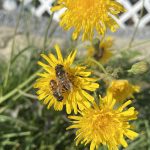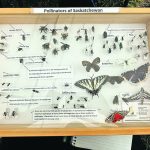Thrive Honey showcases its honey production in market where Alberta produces 40 per cent of all honey produced in the country
Tag Archives pollinators

Alberta honey business ‘thrives’ despite bumpy beginnings
Southern Alberta business harnesses the power of bees to make honey and provide pollination services

Pollinators play a crucial role in Alberta
From the coffee in our cups to the fruits and vegetables on our plates, pollinators, especially bees, are the unsung heroes of our food system.

Farms can be made pollinator friendly
Glacier FarmMedia – Producers pay a lot of attention to inputs, seeding rates and combine settings to expand profit margins. According to ag entomology experts, they should also pay attention to pollinator populations and diversity. That means more than honeybees. In Saskatchewan, there are up to 400 different species of bees that contribute as pollinators. […] Read more

The wild side of pollination
Flowering plants have developed a few ways to move their pollen around, and thus protect their genetic diversity. Many grasses are wind pollinated and, as a backup for their long-shot pollination method, can self-pollinate to bring about the next generation. If you’re a broadleaf plant, you’re likely putting animals to work, whether that’s birds, insects […] Read more

Study determines night spraying can benefit pollinators
Spraying for the lesser clover leaf weevil is not only easier on pollinators but also provides more effective pest control
Forage and seed producers heard about the benefits of night spraying for red clover crops during the Saskatchewan Forage Seed Development Commission’s recent annual meeting. The commission conducted two on-farm experiments of night spraying in June 2021. Graham Parsons, pollinator biosecurity specialist with the Saskatchewan agriculture department, identified the pollinators that benefit from nighttime pesticide […] Read more
Sunflower pollen linked to bumble bee health
Researchers have determined that the tiny spines on sunflower pollen grains significantly reduce parasite infection
Sunflowers, along with more than 180,000 different plant species and more than 1,200 crops, rely on insect pollinators that contribute more than $200 billion in annual ecosystem services globally. At the dinner table, one-third of our food is thanks to the role of pollinating insects.


